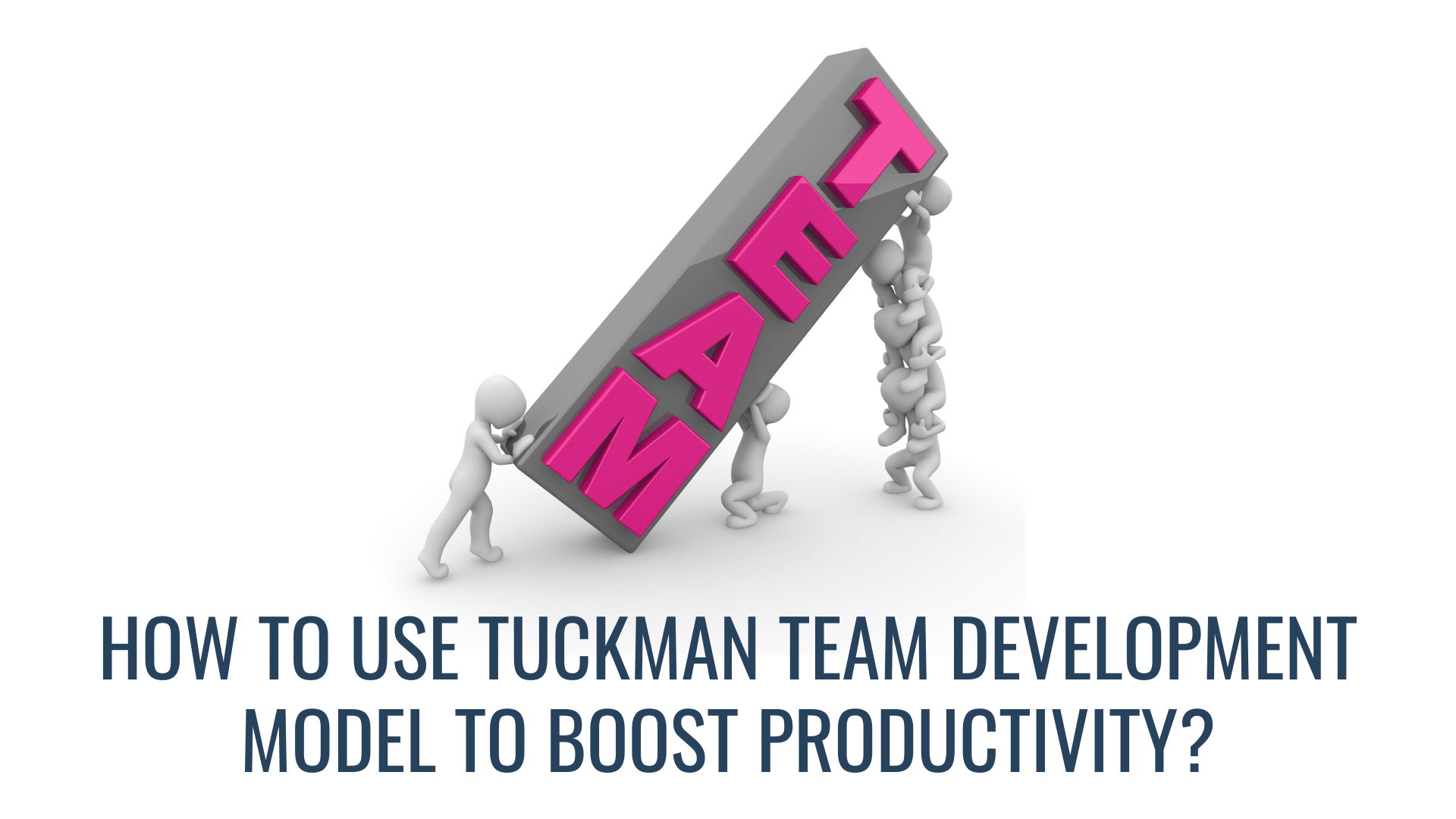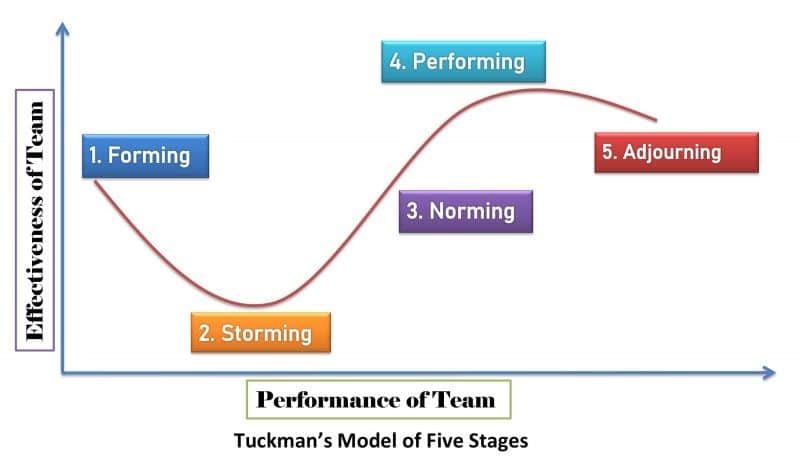
Without any reference to this early model, Bruce Tuckman’s work has established many facets of organizational psychology. Nonetheless, the Team Development paradigm has gained traction due to its unique beauty and utility.
The model outlines the stages that teams typically go through from the start of a project through its successful completion and the factors that may lead the team or project to fail.

Tuckman’s five group development stages are Forming, Storming, Norming, Performing, and Adjourning. It’s one of the best ideas for understanding how group members with dynamic features behave.
Five Group Development Stages:
1. Forming
In this stage, participants usually carefully consider both personal and group goals. They are apprehensive about working with a bunch of strangers or unknown coworkers to understand better and evaluate personal relationships. Member orients itself to itself as well. This stage includes these steps.
- The leader must seem to be open with information & ready to answer the many questions thrown at them throughout this stage.
- Includes keeping an eye on boundaries, strengths, and weaknesses, including the leaders.
- There is likely to be some baggage from how individuals have been handled in the past, which might lead to a clinging to old methods if the experience was pleasant, or skepticism and apathy if the event left wounds.
2. Storming
The most self-assured members begin to vie for social approval and leadership. To prevent rivalry and strife, many groups prefer to bypass this stage. Conflict is required to create an environment where members recognize the benefits of disagreeing. Noise in communication refers to disagreements among group members. This stage contains the following duties:
- This is the time of day when hastily written e-mails should be stored in the drafts box overnight before being examined and regulated in the morning.
- Members of the team are more concerned with their image than with the project at hand.
- The members want to be respected, struggle with feelings of inadequacy, and wonder who will support or undercut them.
- They want to prove to the leader their worth to the team.
3. Norming
Members begin to learn how to operate together as a team and to be task-oriented. They begin to formulate engagement norms. They are, nevertheless, more at ease with one another and are more inclined to disagree and share their viewpoints — communication becomes more open. Finally, the group develops a sense of trust and establishes defined objectives. These steps take place in this stage:
- They’ll be safe and sound if the squad can get to Tuckman’s Norming stage.
- If the Norming stage is reached, it is an exciting moment for everyone because meaningful choices can be made and executed.
- Then, new ideas can be incorporated, chances can be taken, and failure may be considered another step toward success.
- Roles and connections have now been defined, allowing people to focus on the skills that brought them into the team at some point.
4. Performing
At this point, members are engaged and eager to work. Members adjust and adapt to the circumstances and begin to solve pressing issues. The group’s identity, loyalty, & morale are all high.
Finally, there is almost no tension in the interaction patterns; instead, the members are happy, loud, and boisterous, laughing while verbally backslapping one other.
- A group is now a well-oiled machine with all its gears working.
- Fun and comedy are mixed with enough constructive tension that does not harm the fabric of the relationships.
- Disagreements sometimes arise, but they are typically resolved wisely and peacefully by the members.
- Success seems to appear out of nowhere; the leader and team members have learned to give their all and get out of the way.
5. Adjourning
In this final stage, the members may begin to disperse once they have attained their shared aim. It also indicates if the organization members will collaborate or start a new one.
They are pleased with what they have accomplished, but they are disoriented when the organization disbands. The following steps take place in this stage:
- If the team successfully navigated the first four stages, there might be bonding among the members and a sense of loss when the connections end.
- People will also be reflecting on where they started, noting how far they’ve gone, and assessing their contribution to the larger picture.
- The way this is handled might significantly impact the next team that each person joins.
- The result of the Tuckman team development model is a successful and happy team.


